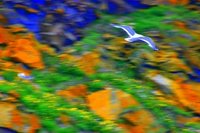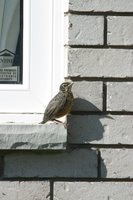Sport Fishing Holiday Destination Fit for Non Anglers – Canadian Nature Tour at Plummer's Arctic Fishing Resort, Great Bear Lake, Canada
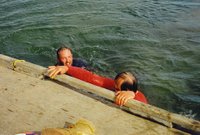
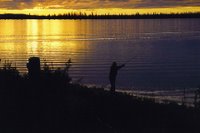

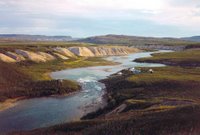
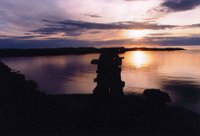
It was one incredible week! Plummers Arctic Fishing Lodge tucked in the northeast part of Great Bear Lake, in the Northwest Territories, Canada. Almost nine (9) years have passed, yet I can transport myself back with all the sights, sounds and feelings as if it were yesterday. My recollection of that Plummers experience is as vivid as the hundreds of photographs and video footage captured during this dream working vacation. The hospitality, the gourmet meals and the unending attention to detail exhibited by Chummy Plummer and his staff at the Great Bear Lake Lodge provided the rooted harmony that balanced the sometimes overwhelming awe of nature that constantly and completely surrounded us. Mother Nature reigns supreme in this Arctic wilderness. People are insignificant participants in the daily cycle of life in this true north.
This 'up close and personal' touch with nature makes Plummers Great Bear Lake a must-go-to Nature Vacation destination. At least once in your lifetime experience a place on this earth where truly the slogan could be:
“GREAT DESTINATION ENGINEERED BY NATURE. GREAT MEMORIES GUARANTEED BY PLUMMERS.”
Five-star fishing, five-star fishing camp accommodations, five-star hospitality wrapped up in the memorable five-star natural vistas and untouched nature of Canada's North. Back in the late 1990s Plummers was a mecca for the most serious sports anglers from around the world. Plummers Great Bear Lake Arctic Fishing Lodge has now been discovered for its “not just for anglers” amenities - Plummers now boasts family week, annual dental and medical seminars.
Visiting remote Canada, north of the Arctic Circle, in late August was one of those 'planets-all-lining-up' opportunities. Accompanied by my business associate John, our week long adventure leaves memories as crisp as the early northern morning air. And what better way to start our morning than hearing a Plummer's staffer call out “Coffee gentlemen.” A carafe of steaming coffee placed outside of our door accompanied our 6 am wake-up call each day. That first coffee of the day set the pace for the short walk to the lodge dining building and for a 'whatever your heart desires' breakfast.
Plummer's Arctic Fishingactually has four separate Lodge locations: 1. Great Slave Lake near Yellowknife; 2. Great Bear Lake; 3. Trophy Lodge, on Great bear Lake; and 4. Tree River Lodge on the Coronation Gulf in Nunavut. During our week long stay we experienced two of these four fishing venues – Great Bear Lodge and Tree River Lodge. Ideal locations for capturing first-rate photographs. And perfect enough for President George Bush, Senior, along with a few of his closest Canadian friends, to visit both these Plummer venues every summer.
Just flying to The Great Bear Lodge is something in itself. We flew out of Winnipeg, Manitoba on a Boeing 737 Jet, first landing at the Great Slave Lake Lodge on a gravel runway and then on to Plummer's Great Bear Lake Lodge, once again landing on a gravel runway! The jet had special flanges behind the front wheel to prevent stones from being ejected into the jet engines. It is something else to look out the airplane window to the rear of the plane as it lifts off and seeing a cloud of dust coming off the runway. Once airborne, it sure looked like some good ol' boys were rippin' up a gravel road below us!
The fishing on this Lake is nothing short of THE BEST. Great Bear Lake is the eighth-largest lake in the world and fourth largest in North America. Awesome! Incredible! Some o f the world's largest lake trout have been reeled in on Great Bear Lake - 72 lbs . Seventy-two pounds makes this fish over 140 years old! It's sport fishing only at Plummers. All catch and release. Plummers practices strict conservation rules, so there will be plenty of fish to catch for centuries to come.
For every two anglers there is a guide assigned for the week. He or she takes care of operating the boat (18 foot aluminum), determining the best location to fish each day, preparing the fresh fish lunches on one of the hundreds of islands (now there's a culinary treat!) and any fishing tips/tricks. John and I were not preoccupied with fishing and so we turned our attention to aggravating our guide, a young University of Manitoba student named Kelly. And we drove him to the limit; asking him all sorts of stupid questions. We did have some coaching from a few of the Plummer's staff on the top 'best stupid questions' to ask, so we mixed them in with our earnest questions:
“So how many pounds of potatoes do they go through in a season at this lodge?” (Stupid)
“How many trout do you figure are in Great Bear?” (Stupid)
“How big is this lake anyway?” (Earnest)
“How much Red River Cereal do they go through in a season?” (Stupid)
“Who is that lady that drops the coffee carafe at our door each morning?” (Stupid)
“How many gulls do you think are on this lake?” (Stupid) Gulls, nature's garbage disposal crew, always showed up when the guide was finished cleaning the trout for lunch.
“How cold is this water?” (Earnest ) If you are wondering, 42- 45 degrees Fahrenheit is the correct answer.
John and I arrived at Plummers with only our clothing and camera equipment. No need to bring any fishing gear of your own. Plummers equipped us with all the rod, reel and tackle gear we needed. They did a great job because, as novice anglers, John and I caught over 40 fish between us! An activity that we never tired of was enjoying the afternoon Northern Sun and scouting out the many islands that dotted 'The Bear'. Much to our guide Kelly's chagrin, we really weren't there for the fishin' – we were the sightseer type of tourist that comes to Plummers. The solitude afforded us with the gentle rhythm of the trolling boat and the anticipation of when we would see the next eagle, or caribou or musk-ox on 'The Bear' shores was just the ticket to help two hardworking executives from the big city of Ottawa, Ontario to unwind.
We became known to other guests at the lodge as the two 'anglers' to stay away from! Perfect! Come to think of it, we always had fishing places completely to ourselves. Bob Izumi was filming a show for his “Real Fishing” TV series at the same time as our visit. Even he didn't seem the least bit interested at my elation that I had snagged what our guide said was the smallest trout he'd ever seen – less than 1 pound 'soaking wet'! Kelly said the lure weighed more than my prize catch! Now there is fishing talent I don't often forget to boast about! John was on the opposite end of the scale from me as far as being a sports fisherman. He did capture, and I mean capture, a trout that was the size of a dog – a 34 plus pounds! Wow! Ya gotta see the pictures!
I went camera crazy here! Images of fishing in the 9 p.m. dusk light, casting right off the lodge's shore. Wolves near the camp, caribou that hadn't been seen this far south of the Arctic Circle so late in the summer season! The ultimate trip within the trip was our fly-out to the Tree River Camp, Nunavut. This camp consisted of eight (8) tarpaulin-roofed, stilted bunk houses and a cook house in the middle of 'no where north'. Flat tundra and low bush were contrasted by mountainous visas that could only be described as a “black grand canyon”, moon-like terrain. We were on the Canadian Shield. Tree River itself is edged with hardened mud river banks where arctic squirrel-gopher-like creatures known as 'sik-sik' were housed in borrows within the river banks. The camp cook, Carol, and her helper, Mary, treated us to a incredible dinner of roast beef and Yorkshire pudding. To top off this sumptuous meal we had ice cream and cake for dessert. Did I say we were in a remote camp on the Arctic Ocean? Sure felt like the Ritz!
We unsuccessfully tried our hand at Arctic Char fishing. Enough of that story! With our guide Kelly we continued with our boating down the Tree River river to touch upon the shores of the Arctic Ocean. We stood next to an authentic inukshuk, saw weather bleached caribou bones, ate some not-so-sweet blueberries and walked the bluff at the mouth of Tree River. We scanned the Arctic ocean waters and could see a sliver of land on the horizon. Victoria Island maybe?
A desolate yet primitive beautiful land in August, we imagined how harsh the winter climate must be to those living here in Canada's north. No time for those chilly thoughts now! The late August sun was warm; perfect for standing near the cliff shore while watching seals play in the mouth of Tree River below us. At that moment we felt as though we were a small speck in the northern universe. I'm certain it was the solid black rock of the Canadian Shield beneath our feet that kept us from being swallowed up by this “Arctic Vortex”. Everywhere I turned there was a photo to be taken. My Canon EOS A4 'photo-exercised' through 20 rolls of film that trip. I scanned these pictures and share some of the best ones with the world. Go to Picasa Web Albums - “plummers arctic fishing”.
Returning to our base camp at Great Bear, we fished a couple of more days and then continued this incredible nature trip with one more memorable experience: we jumped into the frigid Arctic Circle waters of Great Bear Lake. Good news! We did receive a special Plummer's tee-shirt for our stupidity to brave this dunking. Printed on the tee-shirt is “ I was Stupid enough to Swim in the Arctic Circle”. Yes, in our finest dress of long red underwear we jumped off the wharf at the Plummers Lodge into the 43 degree Fahrenheit water! For the record, at that temperature everything shrinks! To this day, my tee-shirt is proudly displayed in our family room.
Plummer's Arctic Fishing is one of those destinations you should put on your must do list. “GREAT FISHING OUR CLAIM, MOTHER NATURE OUR FRAME.” In January 2007, Field and Stream rated Plummers Fishing Resort at the #1 fishing destination in North America.What a perfect way to experience the beauty of Canada's north. Take your whole family on a trip of their lifetime!
Labels: arctic fishing, canadian arctic, fishing destination, nature vacation, plummers arcticce fishing, remote holidays
Sport Fishing Holiday Destination Fit for Non Anglers – Canadian Nature Tour at Plummer's Arctic Fishing Resort, Great Bear Lake, Canada
